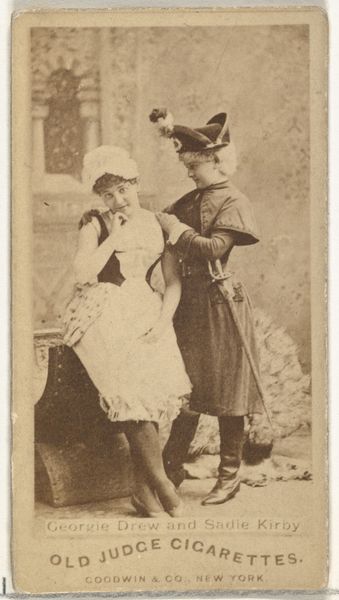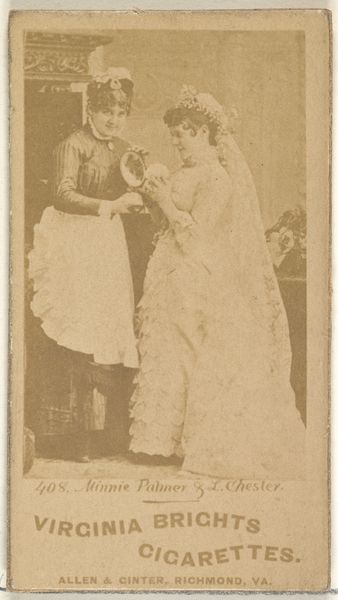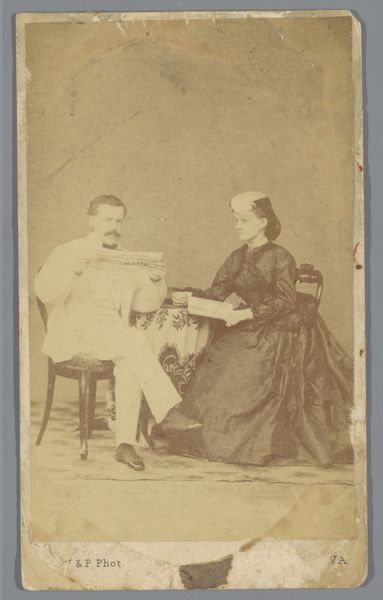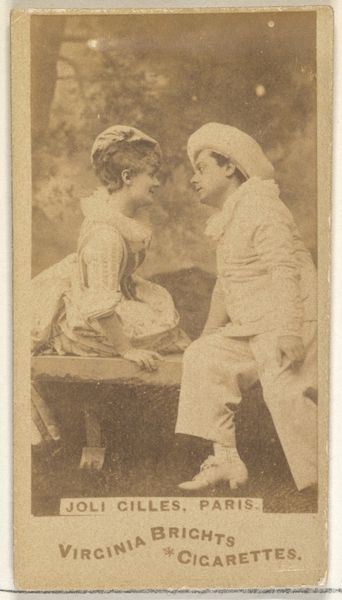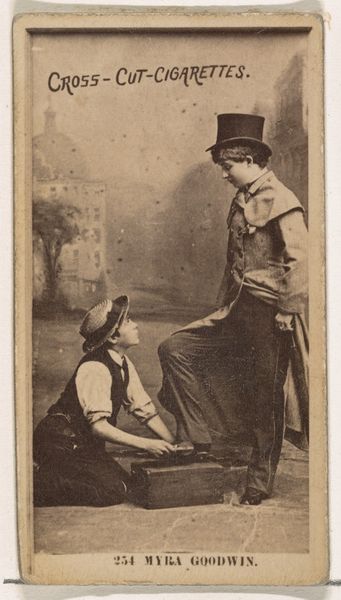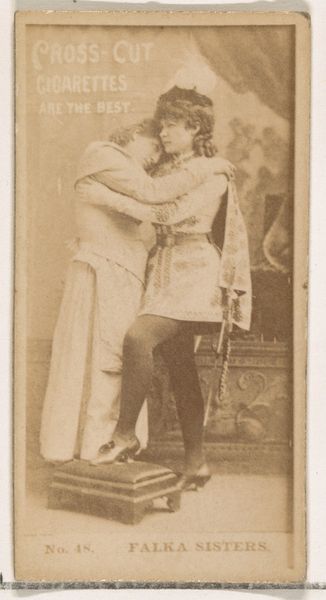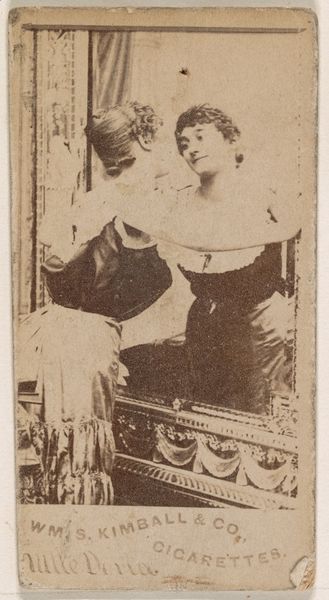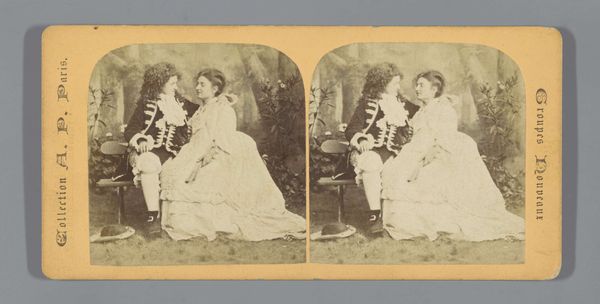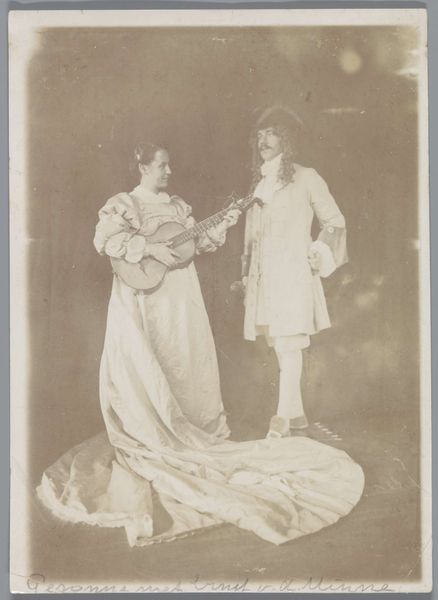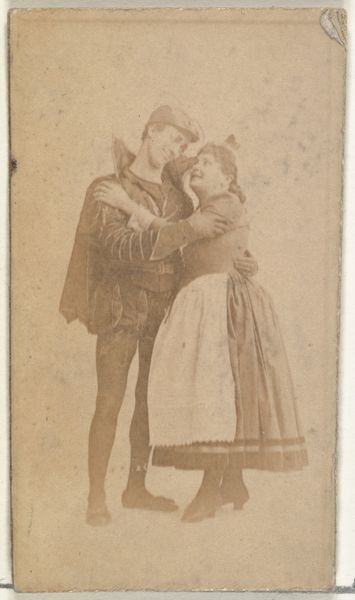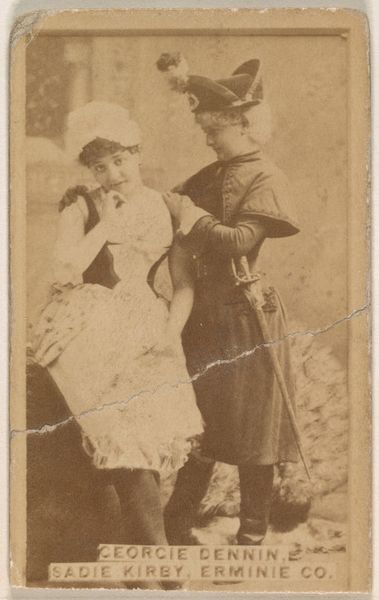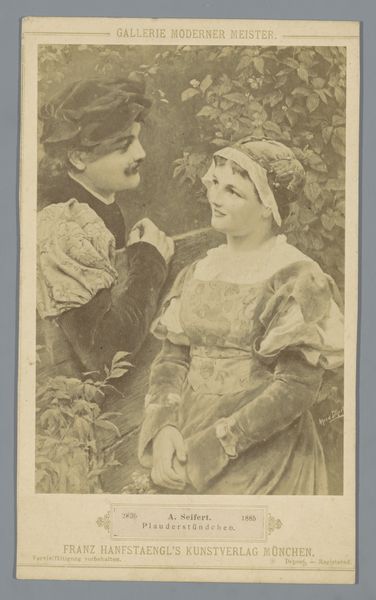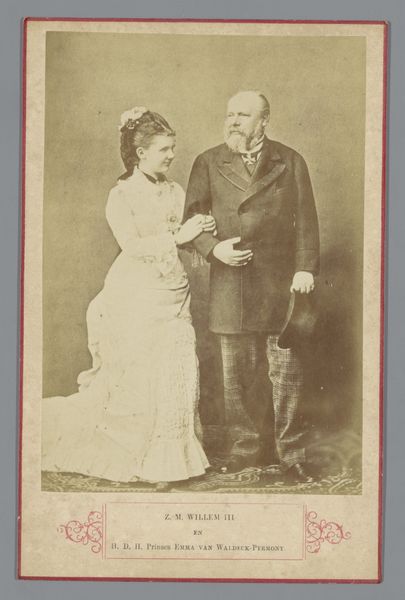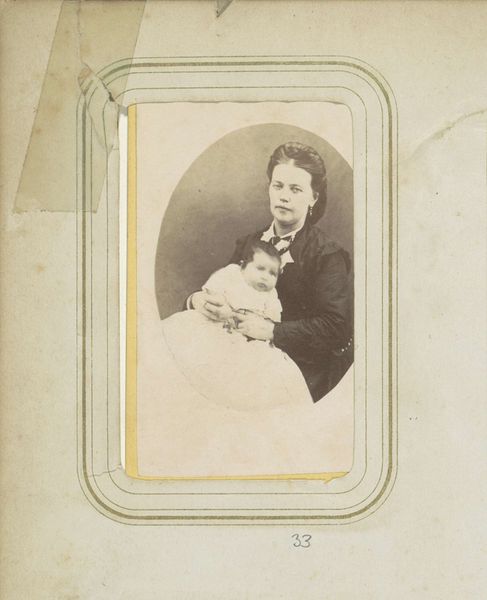
Card Number 773, "The Highest Bidder," from the Actors and Actresses series (N145-7) issued by Duke Sons & Co. to promote Duke Cigarettes 1880s
0:00
0:00
print, photography
#
portrait
# print
#
photography
Dimensions: Sheet: 2 11/16 × 1 3/8 in. (6.8 × 3.5 cm)
Copyright: Public Domain
Curator: Looking at this card, there’s a remarkable intimacy despite its age and the overt commercial purpose. Editor: Yes, but first, context: this is "Card Number 773, 'The Highest Bidder,'" part of the Actors and Actresses series distributed by W. Duke, Sons & Co. in the 1880s to promote their cigarettes. It's held at the Metropolitan Museum of Art, and what strikes me immediately is how staged yet tender the interaction seems. It almost reads like a scene lifted from a play, very much on brand with their series! Curator: Staged, perhaps, but notice how their hands are clasped—almost entwined. That gesture is more than a simple clasp; it indicates deep commitment, promise and, considering it's called "The Highest Bidder," perhaps the complex transactions of desire and worth in relationships. The card is small but carries immense visual symbolism. Editor: True. I think you cannot remove it from the specific context it was produced in. This was a marketing tool to portray actors. It reveals a great deal about the culture in which those items were produced: this idea of presenting glamour, beauty, romance—it suggests aspiration but also capitalistic motives related to consumption, in the turn from 19th to the 20th century. Curator: Absolutely. But look at the woman's hat! The shape and the gentle lighting remind one of the rising influence of Japonisme at the time. These cards acted as small windows to cultural aspirations, mixing industry and artistic fashion of the period. Also, observe the tonality of the image. It exudes sepia warmth, reminding me of daguerreotypes, linking commerce to the more “serious” traditions of portraiture and art history. Editor: Precisely. And framing that commercial context also allows us to question this assumed connection. To analyze, even, whether this card did shape, perpetuate, and commodify specific versions of romance and social worth along lines of class and gender. The actors in their roles invite a deeper critical viewing about social power and idealized lifestyles, particularly with its circulation as something consumed, like cigarettes. Curator: Yes. So a seemingly simple promotional card turns out to reflect far more than just an advertising stunt. It highlights layers of love, consumerism, social projection, and art all compressed in something that fits inside a cigarette box. Editor: I agree. An artifact to ponder not just aesthetic aspirations of its time, but also what that very aesthetic might have obscured or empowered for whom it was consumed by.
Comments
No comments
Be the first to comment and join the conversation on the ultimate creative platform.
